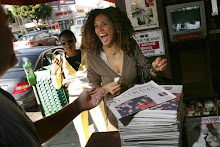.
Random (T)editorial Comments
from Dr. Ted
from Dr. Ted
An occasional series of newswriting tips culled from students’ writing—deobfuscating common AP style issues and common writing/construction problems. . . in no particular order . . .
1. WHAT HAPPENED???? Get the lead right!
EX: The Political Science Department at Utah State University sponsored a speech on how history repeats itself titled, “Déjà Vu All Over Again: Rise of the New Russia.” (when?)
This is a classic “The City Council met…” lead. So what? The fact that a meeting or speech took place is not the news—what happened at the meeting/what was said at the speech?
2. THAT/WHICH
EX: 200 people attended the speech
a) What’s AP style rule for numbers that begin sentences?
b) that, which—see Stylebook. This is important. Basically, use of “which” in a sentence denotes a nonessential (or parenthetical) clause and requires use of a comma; use of “that” connects to an essential part of the sentence. For example:
1. The dog that was brown bit Tom.
2. The dog, which was brown, bit Tom.
What’s the difference? AP says, if you can drop the clause without losing the meaning, use which and set the phrase off with commas. In the first sentence, the brown part is essential to ID the vicious dog. In the second, the dog’s color is a throw-away: oh, by the way, the dog was brown. The important thing in the second example is that the dog bit Tom. See Stylebook, “that, which” entry.
3. AP STYLE—You’re still making too many basic AP style errors. No “last night” or “yesterday”—use day name. Number/numeral errors. a.m. p.m.
4. ATTRIBUTION/QUOTES: You MUST attribute all fact statements to a source. Who says? Unless the statement features unassailable or commonly accepted facts (EX: It had been snowing all day… or “Slum Dog Millionaire” is set in one of the many huge slums that ring Mombai…), attribute the sentence to a source.
Ninety percent of the time, use said as the attribution verb: he said, the professor said, police said…. Remember to bury the attribution in the middle of a statement or quote if you can, usually at a natural pause in the sentence cadence: “Funding from the bailout package will begin to trickle down within the month,” the senator said, “as quickly as agencies can process proposals.”
DO NOT place the attribution at the front of the quote, unless absolutely necessary for transition:
• NO: The senator said, “Funding from the bailout package will begin to trickle down within the month, as quickly as agencies can process proposals.”
That’s lazy. Figure out how to make a transition into the quote, to alert the reader of a change of subject. Like this:
(transition/set-up): Despite Tuesday’s passage of the $800 billion economic stimulus package, officials say it may take several weeks before the first impacts will be felt on Main Street.
(leads into quote): “Funding from the bailout package will begin to trickle down within the month,” the senator said, “as quickly as agencies can process proposals.”
5. ABBREVIATIONS: Only on second reference (Utah State University first, USU subsequently; driving under the influence first, DUI later….); also, NEVER 1400 N—the name of the street in Utah cities is 300 East, 1450 West, 400 North, etc. (the East West North is part of the name, and so does not get abbreviated): “The accident at North Main Street and 1400 North sent two people to the hospital….” Because the name of the street is 1400 North (or 300 West), just like “Main” or Center” or “Fox Run” are street names, the North is never abbreviated: “He lives at 213 E. 1400 North…”
6. SHOW, DON’T TELL—Let facts speak for themselves. Don’t try to shove stuff down the reader’s throat.
EX: Juan Delgado, employee of store owner Marcus Gilbert, needs a new kidney desperately. If Delgado doesn’t receive a kidney soon, he will die of kidney failure….
Show, Don’t tell: Don’t tell us he’s desperate—let the facts demonstrate desperation (a kidney and impending death at 16 is pretty desperate…)
(Also note that this student used “kidney” three times in 26 words…)
7. NAME or LABEL IN LEAD?—Unless the subject of the story is well known (e.g., Utah Gov. Jon Huntsman Jr., President Barack Obama…), it is better for the reader if you label or characterize the individual in the lead graf in news stories, and use her/his name later.
In the previous example, no one knows who Juan Delgado is, so call him a “16-year-old sandwich shop worker” or something on first reference.
NO: Walter P. Alley, 15, died in a freak traffic accident Wednesday.
Well, Fred will ask, “Who the heck is Walter P. Alley?”
Better to write this: A 15-year-old Logan middle school student was killed Wednesday…. And then use his name in the second graf.
BUT! While this is generally true in straight, hard news stories, you can get away with the name of an unknown in feature stories, using a “suspended interest” approach that teases the reader into the story.
EX: For Franceen Follicle, hairdo’s are all about fun—and go-go boots, strobe lights and disco music.
We don’t know who Franceen Follicle is, but the other details make the reader want to read on to find out.
Thus endeth this lesson. More to follow...

